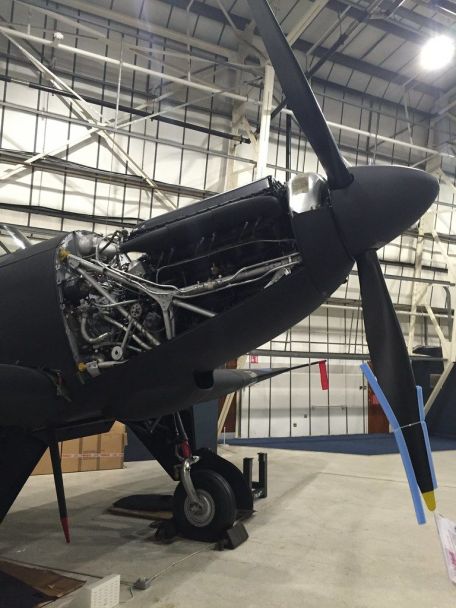Bolton Paul's Defiance Story
A huge shift towards more modern and powerful aircraft platforms occurred during the interwar period. Boulton Paul Defiant followed as the RAF's third such monoplane, and surprisingly, the Defiant also became the RAF's first four-gun fighter.
The Defiant was derived from Air Department specification F. 9/35, which called for a two-seater monoplane with all armament concentrated in a rear-mounted hydraulically powered dorsal turret. Whatever the reason, war planners are excited about the idea of ??a fighter with a centralized fire battery in a powered turret system.
The idea is that the plane can maneuver into enemy bomber formations and wreak havoc at will with its superb weapons while protecting itself from pesky enemy fighters.
Boulton Paul already had some experience developing this concept, building about 59 Hawker's Demon aircraft in the early to mid-1930s. These aircraft were a development of the Hawkhardt fighter and had a closed turret at the rear of the fuselage.
The turret was designed by Fraser-Nash and proved to be a reliable solution for mounting heavier weapons and better sights and working with the gunner's preference. Early forms of the turret were manually driven and ventilated, but external power sources, frames and glass enclosures were soon developed to evolve the design into a more traditional form.
The Defiant Mk I has a top speed of 304 mph and a range of 404 miles. With a service ceiling of about 30,350 feet, it was comparable to other early forms of new monoplanes. Power comes from a 1,030-horsepower Rolls-Royce Merlin III liquid-cooled V12 piston engine.
A total of 723 Mk I series fighters were produced.
Provocative NF. The Mk II follows the Mark I series into the fold. These are essentially upgraded versions of the previous base brand, but a more specialized platform to fulfill the night fighter role, with differences including an increase in the vertical tail area and the implementation of the AI ??Mk IV airborne interceptor radar. Provocative NF.
The Mk II range has slightly different specs, with a top speed of 313 mph and a service ceiling of 30,350 feet. The range has now increased to approximately 465 miles. Power now comes from a 1,280-horsepower Rolls-Royce Merlin XX series piston engine. 210 total NF. The Mk II model was produced.
The other brand is ASR. Mk I series, these were released as dinghy bottom air-to-sea rescue platforms. The TT Mk I is nothing more than a Mk I series target tugboat conversion model, of which about 150 are converted into roles.
The TT Mk III was also a target tow aircraft, although these were produced as 140 new build systems without the quad turret.
Despite her early successes and ensuing losses, Defiant has found a place that fits her well in the night fighter role. Advances in nighttime radar will undoubtedly help extend the life of the platform, as will the need for more defenses in the UK. The lack of forward-facing weapons was undoubtedly a terrible design oversight, but Bolton Paul's engineers did what they could with what they knew at the time. In the end, Boulton Paul Defiant became an unforgettable part of military aviation history, and if events dictated otherwise, the story could well have been a tough and unforgettable one.
Unfortunately, only one complete copy of the Boulton Paul Defiant exists, properly preserved by the RAF Museum in Hendon, London.
Boulton Paul Defiant Specification
Basic
Production
Roles
- Fighter
- Intercept
Dimensions
10.77m
11.99m
11.32 ft (3.45 m)
Weight
2,849 kg
3,821 kg
Performance
Performance
313 mph (504 km/h; 272 knots)
30,348 ft (9,250 m; 5.75 mi)
465 miles (748 km; 404 nmi)
579 m/min
Armor
Default:
4 x 7.7mm Browning machine guns in the hydraulically powered rear turret.
Changes
page 82 - Prototype fighter name; generated example.
Mk I - with 1,030 hp Rolls-Royce Merlin III engine; 723 copies made.
NF. Mk I - Mk I model converted to night fighter character.
NF. Mk IA-NF. MK I model and AI. Radar system Mk IV/VI.
ASR. The Mk I - Air-Sea Rescue model is suitable for hauling dirty boats.
T.T. Mk I - Target tug conversion for the Mk I model series; 150 conversions.
NF. Mk II - Night combat variant powered by upgraded 1,280 hp Merlin XX powerplant; increased fin area; AI Mk IV airborne interceptor radar; 210 copies made.
T.T. Mk III - target tow aircraft; 140 new buildings; no towers.






